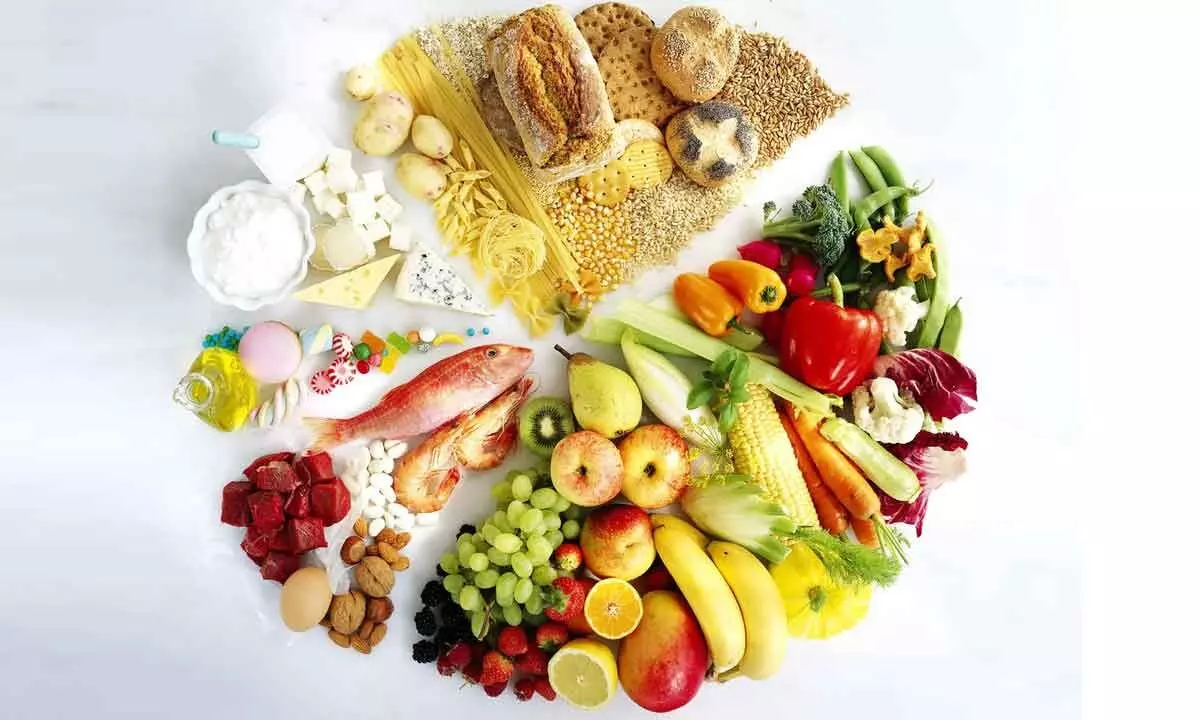Macronutrient Intake Analysis and Dietary patterns across India

Nutrition science, one of the oldest and critically significant fields of research, profoundly impacts human health and quality of life. It aids in understanding the nutritional requirements of various population segments and formulating dietary recommendations tailored to each subgroup. These recommendations not only aim for sustainable methods of achieving nutritional adequacy but also prioritize health maintenance and disease prevention. To be effective, dietary guidelines must consider factors such as market availability, cost, local food preferences, agricultural practices, and various sociological and population-level dynamics to adapt across diverse populations.
Diet significantly influences an individual's nutritional status, directly correlating with their health. These collective indicators serve as impactful measures of the well-being and health of communities or nations. However, in countries like India, the wide dietary spectrum poses challenges in implementing nationwide nutritional assessment studies and designing dietary recommendations that can accommodate such diverse dietary habits. India, like many countries worldwide, is grappling with the 'double' burden of malnutrition, characterized by a high prevalence of micronutrient deficiencies alongside an increasing number of people affected by obesity due to over nutrition.
This phenomenon is a consequence of rapid urbanization, which has led to a shift in dietary habits among a significant portion of the population towards energy-dense foods high in fats, sugars, or sodium, while decreasing the intake of fruits, vegetables, and dietary fibers like whole grains. Consequently, there has been a significant rise in non-communicable diseases (NCDs) and associated conditions in various segments of the population. Despite the existence of guidelines for balanced and healthy diets for Indians, several factors hinder their effective implementation in everyday practice. It is imperative that such recommendations focus more on food rather than just nutrition and are presented in a format easily understandable by the general public. In pursuit of these objectives, the ICMR-National Institute of Nutrition has developed the 'My Plate for the Day,' a simplified pictorial guideline for a healthy and balanced meal based on the actual dietary intake patterns of Indians.
The causes of malnutrition, encompassing both undernutrition and overnutrition, are complex and multifaceted. However, diet stands out as a major contributor to sustaining nutritional health. Therefore, any dietary guidelines should be based on a comprehensive understanding of what the target population regularly consumes to effectively address nutritional gaps. Dietary adequacy and diversity are crucial determinants of nutritional health in any population. With this in mind, efforts have been made to analyze food group intake and macronutrient intake by age group, activity level, Standard of Living Index (SLI), and region.
Additionally, the contribution of different food groups to energy, protein, fat, and carbohydrates, as well as the proportion of the population consuming energy obtained from various food groups according to the ICMR-NIN. Furthermore, variations in the prevalence of overweight and obesity across urban and rural areas have been examined. Understanding dietary intake in terms of food groups is crucial for developing region-specific food-based strategies to address the triple burden of malnutrition in India, given its diverse cultural and food behavior practices. This information can also facilitate inter-ministerial convergence related to production, processing, distribution, and availability, thereby ensuring food and nutrition security to achieve the goal of 'zero hunger' by 2030.
Comparing food groups and nutrient intake among different urban and rural adult groups based on gender and socio-economic status revealed several notable findings. Socio-economic status was categorized into three groups—poor, normal, and wealthy—based on income levels for adult men and women in both urban and rural India. In the food group 'Cereals and millets,' individuals with low socio-economic status, particularly females, consumed approximately 18% less than their male counterparts in both rural and urban settings. Similarly, a 15% to 17% difference was observed between males and females in the 'Normal' and 'High' socio-economic categories across both rural and urban data. When comparing urban and rural settings, urban individuals, irrespective of gender or socio-economic status, consumed significantly higher amounts of 'Vegetables' (35-55% higher across groups) and 'Roots and Tubers' (26-50% higher across groups) than their rural counterparts across all socio-economic categories.
Dietary patterns in India exhibit significant variations across different population groups, spanning age groups, activity levels, standard of living index, and rural and urban settings. A common observation across most population groups is the excessive intake of cereals compared to recommended levels, coupled with inadequate consumption of protective foods such as legumes, milk, nuts, vegetables, and fruits. However, the impact of these observations needs to be corroborated with the prevalence levels of nutrition-related non-communicable diseases in these groups.
Across all age groups, rural surveys showed a higher mean intake of 'Cereals and Millets' compared to urban populations, with some rural groups consuming over 25% more than their urban counterparts. Conversely, urban age groups generally had higher intakes of 'Pulses' than their rural counterparts, affecting the cereal-to-pulse ratio for different age groups.
Urban populations tended to have higher mean intakes of 'Milk & Milk products' and 'Fats & Oils' across all age groups, as well as higher consumption of 'Added sugar' and 'Eggs and flesh foods'. 'Nuts and Oilseeds' and 'Green Leafy Vegetables' were also consumed in higher quantities by most urban age groups.
Urban populations exhibited higher intakes of 'Roots and Tubers', 'Other Vegetables', and 'Fruits' compared to rural populations. Consumption of food from outside sources was almost double in urban India compared to rural India across all age groups. Median energy values were comparable between most urban and rural age groups, with slightly higher median protein intake in urban populations. Urban age groups consumed higher proportions of fats, while rural age groups had higher carbohydrate intake.
Only specific groups, such as Rural Men 18 to 60 years (Sedentary Work), Urban and Rural Women 18 to 60 years (Sedentary Work), and Rural Women 18 to 60 years (Moderate and Heavy Work), met or exceeded the recommended EAR values for energy intake per kg body weight. All other urban and rural age/activity groups fell short of these recommendations.




















